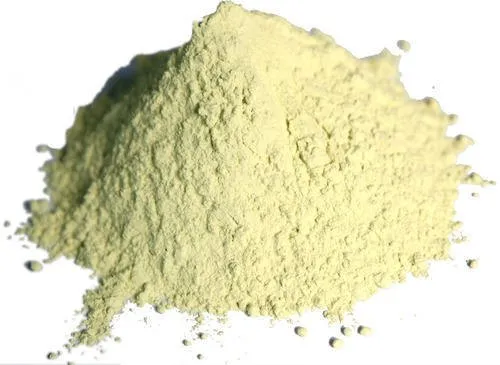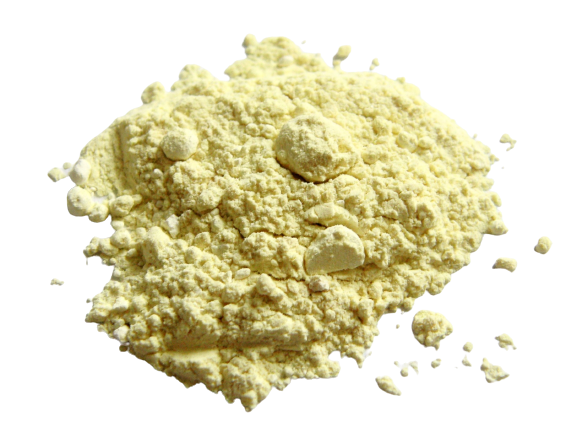HPG Metals India Pvt Ltd provide this unique compound, also known as Bi2O3, may not be a household name but it has some fascinating properties that make it an important material in various industries. From its vibrant colors to its role in electronic devices, there's more to bismuth trioxide than meets the eye. So, let's dive into the world of this intriguing substance and explore what makes it so special!
We provide best quality of Bismuth trioxide, which is a white, odourless powder that is used in a variety of industries, including cosmetics and pharmaceuticals. It is also known as bismuth oxide or bismuth suboxide. Bismuth trioxide is insoluble in water and has a melting point of 1,835 degrees Fahrenheit (1,010 degrees Celsius).
Bismuth trioxide is used as a colorant in cosmetics and as an ingredient in some acne treatments. It can also be used as a catalyst in the production of polyurethane foam. In the pharmaceutical industry, bismuth trioxide is used as an antacid and to treat diarrhea.
When inhaled, bismuth trioxide can irritate the lungs and cause difficulty breathing. Prolonged exposure to high concentrations of bismuth trioxide can cause kidney damage.


Bismuth Trioxide, or Bi2O3, is a white solid substance with a slight pinkish tinge. It is odourless and insoluble in water. Bi2O3 is used as a pigment in paints and ceramics, and as an antacid. It can be found in nature as the mineral bismite.
The majority of bismuth trioxide is produced via the direct oxidation of bismuth metal in air. The resulting product is a mixture of oxides which are then separated by precipitation. Bismuth trioxide can also be prepared via the decomposition of certain bismuth compounds, such as bismuth nitrate.
Bi2O3 exists in three different forms: alpha, beta, and gamma. The alpha form is the most stable form at room temperature and pressure. The beta form converts to the alpha form upon heating above 300 degrees Celsius. The gamma form exists at high temperatures and pressures and reverts back to the alpha form when cooled down.
Properties of Bismuth Trioxide
Bismuth Trioxide, also known as 'Bisulfite of Bismuth', is a white amorphous powder. It is insoluble in water and slightly soluble in acids. It decomposes on heating to produce bismuth oxide
Bismuth Trioxide has the following properties:
- It is a strong oxidizing agent.
- It is used as a catalyst in the production of acrylic acid and acrylamide. It is used in the manufacture of certain types of glass and ceramic.
- It is used as a pigment in paints and enamels.
Uses of Bismuth Trioxide
Bismuth trioxide is a white, odourless solid that is insoluble in water. It is used as a dyeing and printing mordant, as well as a pigment in ceramics and enamels. It can also be used as an oxidizing agent in organic synthesis.
Benefits of Bismuth Trioxide
Bismuth Trioxide is a white powder that is used in many industries as a pigment, antifungal agent, and fire retardant. It is also used in the production of certain types of glass and ceramic. Bismuth Trioxide has a number of benefits that make it an ideal choice for many applications.
As a pigment, Bismuth Trioxide can be used to produce a range of colors, including white, black, and brown. It is also resistant to fading and has good hiding power. This makes it an ideal choice for use in paints and coatings.
As an antifungal agent, Bismuth Trioxide can be used to treat fungal infections such as athlete's foot and ringworm. It is also effective against mold and mildew.
As a fire retardant, Bismuth Trioxide can help to prevent the spread of fire by inhibiting combustion. This makes it an ideal choice for use in products such as insulation and fireproofing materials.
Bismuth Trioxide is also used in the production of certain types of glass and ceramic. The high melting point of Bismuth Trioxide makes it ideal for use in products such as electrical insulators and laboratory equipment.
Safety Concerns about Bismuth Trioxide
Bismuth Trioxide is considered safe when used in small amounts, however there are some safety concerns to be aware of. When inhaled, Bismuth Trioxide can irritate the lungs and cause difficulty breathing. Ingesting large amounts can lead to stomach pain and vomiting. If Bismuth Trioxide gets on the skin, it can cause irritation and redness. If it gets in the eyes, it can cause redness and pain.
How to Use Bismuth Trioxide
Bismuth Trioxide can be used in a variety of ways, depending on the desired outcome. For example, it can be used as a drying agent or catalyst, or as an oxidizing agent.
Conclusion
In conclusion, bismuth trioxide is an important mineral compound with a variety of uses. It can be used to create pigments for paint or cosmetics, as well as being found in some medicines and pharmaceutical products. It works by absorbing light and reflecting it back outwards, which makes it a valuable tool in the medical industry. With its ability to absorb radiation and reflect light, bismuth trioxide has become an essential part of modern day life and will continue to be so for many years to come.
